by Dr phil René Roca
Ex: http://www.currentconcerns.ch/
The cooperatives in their various forms provide an essential foundation for the Swiss federal state. As economic self-help organizations cooperatives are based on the personal concept of man. Cooperatives should not merely be considered as a form of organization but in a broader sense as an important form of society. A cooperative is supported by a community that raises the highest ethical demands to respective tasks and that assumes much responsibility as the owner of a common cause. The total property, which must be protected, belongs to the association of people and the individual cooperative members. The functioning of a cooperative is guided by strict rules. These are monitored and in case of violations the community is supposed to impose sanctions. The cooperative is always locally based and often embedded in a federal-subsidiary political system. Cooperative members democratically decide on every question, everyone has a one vote.
The purpose of a cooperative is that all the members of such an association have the optimal benefit of their common cause. Utilization can vary but the purpose must always serve the Bonum Commune, the common good anchored in natural law.
The well-known Swiss historian Professor Dr Adolf Gasser has highlighted the importance of the economic co-operative principle in a very clear and plausible way. According to his findings, the history of Europe was characterized and shaped by the strong contrast of two different ethical principles, namely domination and cooperative. In this manifestation, Gasser states, two worlds were facing each other that were subject to very different laws of development: the world in which the political system was established from above and the other world in which the structures developed from the bottom up, or in other words: the world of domination and the world of cooperative, the world of subordination and the world of co-ordination, the world of centralism and the world of communalism, the world of command and the world of self-government, the world of communal bondage and the world of communal freedom:
“The contrast between domination and cooperative might be the most important antithesis known in social history. This contrast of authoritarian state – state of society is simply about very fundamental issues: namely about the elementary foundations of human social life.”
In his major work “Gemeindefreiheit als Rettung Europas. Grundlinien einer ethischen Geschichtsauffassung” (Communal Freedom as a Rescue of Europe. Outlines of an ethical conception of history) Gasser explains that it is the cooperative organizing principle which leads to community ethics:
“Whereas in an authoritarian-bureaucratic state, politics and morality always base on different levels, they are inseparable in a social-communal state. Accordingly, it is the cooperative organizing principle, as it is the foundation of the bottom up community, which can be called ‘communal community ethics’.”
In Switzerland this cooperative principle has not only been applied since 1848, but even before it had been an integral part of the federal ethos for centuries. This can be shown by a look at history.
The origin and history of the cooperative principle
The cooperative principle itself is probably as old as mankind, but it lacks written sources. Even for Late Antiquity and the Early Middle Ages, the sources are sparse. But a look at the ensuing written sources and the knowledge about man’s social nature reveal that cooperative forms of organization were prevailing at that time. Most of the cooperatives developed from the medieval cadastral constitution or in other words, they emerged from the “medieval common Mark”.
One theory is that the free Mark cooperatives date back to the conquest of the Germanic peoples at that time. The land acquisition was done by clans, called ‘groups of a hundred’, assigned to them by the prince in their areas. These areas were just called “Mark(graviates)”, and their soil was cultivated cooperatively. The communal and economic life within the clan was thus a free Mark cooperative. The Frankish constitution and the feudal system have suppressed this early medieval order in many parts of Europe, except in some places, such as the pre-Alpine regions of today’s Switzerland. This tradition has partly been kept alive until today on the existing common land cooperatives, alpine and forest cooperatives.
Another approach emphasizes that the Mark cooperatives were only established in the high and late Middle Ages as a merger of existing rural cooperatives; or they were created by concentration of neighborhood associations. The residents wanted to regulate the use of the common Mark within a larger framework. The population increase, the then prevailing three-field system and the further development of the country supported this development. The regulations along borders and roads as well as agreements were necessary to cope with the joint work.
Both explanations are important and deserve attention when exploring the origin and development of the cooperative principle in the European Middle Ages. These early roots of the cooperative system are essential for the understanding of the Swiss political system. The historian Professor Dr Wolfgang von Wartburg writes:
“These small, natural, self-governing communities have been fertile ground and seminary of Swiss freedom and democracy and they still are today. The most extensive and most viable Mark cooperatives could however be found in the mountains, where the joint Alp and cattle farming encompassed entire valleys.”1
Development of the cooperative principle in the Middle Ages and the Early Modern Age
In Switzerland, the Allmend, i.e. the common grounds or commons, were central to the spreading and development of the cooperatives. These areas were used for pasture, as forest and desert ground and they were open to everyone. To establish their commons, the inhabitants of a village association – of one or more villages, hamlets or groups of farms – designated a specific area for collective economic use. A peasant family’s work was thus divided into three parts: Besides the agricultural land and the residential area with gardens and homesteads the commons represented a third zone, which was jointly worked. Since the early Middle Ages the European nobility had sought to restructure the common lands constitution or at least influence it. In many places, including the territory of modern Switzerland, the cooperative principle could however be maintained. Due to the diversity of local conditions and human relations a variety of forms of cooperatives have developed over time.
For Switzerland, the preconditions of settlement history were particularly important. In the Swiss Central Plateau, where the dwellings concentrated and became villages, the common Mark or Allmend alongside with house, garden and fields was essential for all villagers. Therefore, regulations on the use of the commons and on the management of arable ground seemed necessary. Such land utilization systems had been in use since the 10th century. A prerequisite for the use of commons was often the long-term possession of a farm within the village district. Newcomers had to buy this right and pay an entry fee. By establishing and claiming definite rules the rural population was often able to resolve their conflicts via neighborly agreements. The cities also had a common Mark and enacted a similar legislation. In the hilly Alpine foreland the farms united and formed so-called Allmend cooperatives. In many places of the Alps so-called valley cooperatives were established – on the basis of the valley communities as rural associations – as for example in Uri, Ursern, Schwyz, Glarus, Entlebuch, in the Grisons, the Valais and the Ticino valleys.
The commons were of fundamental importance for the livestock until silage feeding in summer was introduced. In addition to the meadows and the stubble of the arable land, farmers grazed the forest, in particular with pigs. The forest also provided wood for construction and fireplaces. The collection of fruit and berries or mushrooms complemented the people’s nutrition and secured them in case of crop failure. The Allmend has always been a kind of land reserve the people could resort to if necessary. From the 16th century onward the commons were divided and became separate property, but many also stayed intact until the rise of the Helvetic Republic and beyond.
The Nobel Prize in Economy laureate Professor Dr Elinor Ostrom studied the basic “constitution of the commons” in a comprehensive, world-wide study.2 Based on historical examples from different continents, she revealed the importance of the cooperative principle for the present. Based on the commons her study is a reminder of how people organize in view of scarce natural resources, in order to jointly solve complex problems. In her comprehensive studies Elinor Ostrom concludes that cooperation of those directly affected is better than state control or privatization if they want good management of their local commons and their resources. So she impressively appreciates the cooperative principle and clearly reveals its importance for the economies of the 21st century.
In the Middle Ages the commons formed an important foundation of social interaction; their rules provided order and security for the geographical area we now call Switzerland. Special types of cooperatives that serve specific purposes developed in addition to the commons which could be found in all agricultural villages until the 18th century. The Alpine cooperatives that are numerous in the Alps and the Jura are of great importance. Moreover, along the rivers and streams the so-called ‘weir cooperatives’ developed. In hydraulic engineering the term ‘weir’ means barrage. For the irrigation of lawns the so-called irrigation cooperatives developed, too.
The landlords and rulers repeatedly tried to exert influence on the organization of cooperatives, such as the Habsburgs in Central Switzerland. The early Confederation could however fend off such requests successfully. In the course of the 13th century Uri and Schwyz were given charters and they were even able to maintain this imperial competence later on. It enabled these valley cooperatives to freely dispose of their commons and use them without any outside interference. On this basis, the federal states and the Federal Charter of 1291 developed. In Uri and Schwyz the big valley cooperatives – the corporations Uri and Ursern in the canton Uri and the corporations Oberallmeind Unterallmeind in the canton Schwyz – have survived until today. The term “corporation” emerged in the late Middle Ages and can be equated with “cooperative”.
The Genossame has always been the highest authority of the cooperative. The meetings were chaired by a president who was elected as governor, beadle or Alp master. The chairman had to take decisions, carry out inspections and was responsible for administration and judiciary. The common public work was completed in the cooperative association. The rights and obligations were laid down in statutes and codes.
The cooperatives were of major political significance for the later development of the Confederation. They developed a community-building spirit, without which a nation forged by the will of the people like Switzerland could never have emerged. Therefore, during the late Middle Ages and in Early Modern Age the rural or valley cooperatives took over other tasks of common work besides their traditional ones. Such were the maintenance of roads and bridges or hydraulic engineering, water supply, the building of churches or even the duty to care for the poor. Thus, the rural and valley cooperatives developed slowly into rural and valley communities, the foundation of the future federal state.
Wolfgang von Wartburg aptly writes about this process: “The Swiss ideal of freedom has emerged from this human reality, not from an abstract idea [...]. Thus, the formation of the Swiss government differs from all other state formations in Europe. It is not based on the desire for political unity, but rather on the desire to preserve the original character and freedom of the members, thereby helping to maintain their diversity. Its unity is not created by a superior power or by uniformity but by free cooperation in joint tasks.”3
The comrades became citizens of the village and the former village cooperatives developed into public village communities. By the time this led to the development of the so-called “Bürgergemeinde”4 (citizens’ communes) that are still in existence in several cantons.
The Helvetic Republic of 1798 resulted in the separation of residents’ communes and citizens’ communes. The division of the commons was intensified then. Some commons were on lease or in private ownership, others were owned by residents’ communes, or corporations formed under private law.
The corporations and citizens’ communes in Switzerland are still an important traditional good and establish human connections to a commune’s history and culture. In the canton of Grisons, for example, the old rural cooperatives are still alive in the residents’ communes, so these are also the owners of most of the commons. In the central Swiss area around Bern the citizens’ communes as successors of the original rural cooperatives own the common property and manage it; this is also true for the canton of Valais. In the north of the Alps and the Ticino, the corporations or corporate citizens’ communes are the owners and managers of the commons.
Cooperative movement in the 19th Century – the cooperative as a moral foundation of democracy
Without the tradition of the commons and the described “cooperative spirit” in Switzerland the foundation of the Confederation in 1848 would never have taken place. Adolf Gasser emphasizes that this Swiss “cooperative spirit” always roots in the small unit, i.e. in the small neat unit of the commune, whose origin goes back to the cooperative principle. Only in such a unit a vibrant co-operative autonomy can develop. Adolf Gasser comments on that:
“Large-scale political bodies of national character could only develop in a cooperative spirit, if they emerged from an assembly of free, fortified people’s communities.” Based on the Swiss tradition of the commons and the cooperative, a large cooperative movement formed itself in the course of the 19th century, especially with the increasing industrialization.
This movement – in Switzerland and in Europe – infiltrated into new industrial areas but not without preserving the basic cooperative principles. The various types of cooperatives will be briefly presented below.
Agricultural cooperatives
In particular, the agricultural crisis of the 1880s in Switzerland triggered a wave of creation of new cooperatives, especially purchasing and marketing cooperatives. Farmers drew on the tradition of the commons and Alpine corporations as well as the dairy cooperatives. In the course of the 19th century, these cooperatives spread as milk and dairy cooperatives from the mountains to the lowlands, i.e. to the Central Plateau cantons of the German and French part of Switzerland. Towards the end of the 19th century there were about 2,000 of these cooperatives. At the beginning of the 20th century they joined to form associations without weakening the local cooperatives. The Eastern Swiss Association of Agricultural Cooperatives (Volg) is a pioneer of such a cooperative association. In the 1890s, cooperatives also emerged in the livestock branch. Agricultural cooperatives are still of significant importance in the agricultural sector.
Production cooperatives
During the industrial revolution production cooperatives were also established in Switzerland. Here, the cooperative members are not only owners but also employees of the cooperation. The idea of cooperative production was primarily developed by early socialist and social reform movements, who sought an answer to the social issue. In this context, the Englishman Robert Owen with his cooperative model plays a pioneer role. Under the influence of the early French socialists Charles Fourier and Louis Blanc the first production cooperatives were established in the 1840s, especially in the French part of Switzerland. Again, the cooperative explicitly stood in the tradition of cooperative self-help, as it had been important in rural commons corporations or Alpine corporations.
Consumer Cooperatives (Consumer associations)
The consumer cooperatives became particularly important for the economy. of The consumer cooperatives’ antecedents were the bread and fruit clubs, in which workers, craftsmen and farmers united, sometimes supported by manufacturers, to enable the cheap purchase of grain, other food or fuel and to make bread.
In the second half of the 19th century workers and later employees, officials and farmers joined to protect and foster their interests as consumers through joint procurement of essential goods. In 1851, eight members of the patriotic Grütli association around Karl Bürkli founded the Consumer Society Zurich (KVZ) which was the first to be called “consumer society”. The cooperative principles included an open membership, democratic management, the potential refunding and political and religious neutrality. The consumer society Zurich was soon imitated all over Switzerland (Founding of the Swiss Consumers’ Societies; from 1890 on called the Swiss Association of Consumer Associations, VSK; Coop since 1970). The consumer cooperation also stood in the cooperative tradition of Switzerland, of course.
Housing cooperatives
In the course of the 19th century the population of Switzerland doubled. At the same time, the shifting from home industry to factory-based industry in rural territories as well as in towns led to poor housing conditions and severe housing shortage. In the mid-19th century private housebuilding was mainly in the hands of speculators. At the beginning of the 20th century, finally, the cooperative and communal principle also became more and more important in the housebuilding sector. One reason was that the public authorities intervened extensively in the housing market for the first time and accepted housebuilding as a task of general public interest. Thus non-profit housing cooperative came into the necessary money to realise own communal building projects.
Credit cooperatives and savings cooperatives
Since the first quarter of the 19th century, savings and lending banks had been established in Switzerland in the course of industrialisation. Rural and urban homeworkers and factory workers wanted to invest their saved money and plan the provisions for their old age. Communes and cantons often founded their own savings banks or promoted their development by providing guarantees and donating capital funds. In 1850 already 150 savings banks were existent in Switzerland which devoted themselves in particular to the mortgage business and then also to the granting of operating credits. As many savings and lending banks risked their non-profit status over time, they lost importance from 1860 on. Sensible alternatives were the upcoming cantonal banks and the foundation of numerous cooperative local banks, inter alia the Raiffeisen banks. Due to a broader capital basis they had more freedom to grant credits; and as cooperatives they deserved the confidence of many citizens.
The main focus of Raiffeisen banks was on the savings and mortgage business. Until this day, every Raiffeisen bank is legally independent and each of them belongs to its cooperative members. The first Raiffeisen bank of Switzerland was founded in 1899 in Bichelsee on the initiative of the Catholic priest Johann Evangelist Traber. He was guided by the example of Friedrich Wilhelm Raiffeisen who had founded credit cooperatives in Germany around 1850. They were to strengthen the rural population by collective self-help and thus protect them against usury.
Traber describes the Raiffeisen banks as follows:
“What are Raiffeisen banks? They are credit unions which are based on altruism and charity, willing to make sacrifices; they are intended to enhance the status of farmers, craftsmen, trade and commerce morally and economically and to strengthen the financially weak.”5
The cooperative movement of the 19th century emphasised the cooperative tradition in Switzerland. So they succeeded in connecting conservative political forces with early socialism which was solidly connected to trade unions and labour parties via the Grütliverein. Similar to the development of direct democracy they succeeded – outgoing from the communal level up to the cantonal and national level – in establishing a national movement which internalised the cooperative idea across party lines.
Cooperative movement in the 20th century – social capital and the third way
The cooperative as a legal form was established in 1881 in the Swiss code of obligations and was becoming increasingly popular. Thus the number of cooperatives massively increased in Switzerland around the turn of the century (in 1883: 373; in 1890: 1,551; in 1910: 7,113). Above all, the most important reasons were the recurrent crises of the capitalist economy. With the big crisis of the 1930s the founding of cooperatives strongly rose again, until they reached a culmination point in 1957 with more than 12,000 cooperatives.
Barely half of the cooperatives were of agricultural nature; in addition, new ones came from tertiary sectors, as for example the electricity industry. After the Second World War building and housing cooperatives were founded and promoted particularly often.
The Migros, founded in 1925, was based on a business idea of Gottlieb Duttweiler. He had set himself the target to sell cheaper food by avoiding intermediary trade. In 1941 the Migros was converted into a cooperative. The intention was to protect the consumers’ interests and orient the business policy towards the “social capital”. For Duttweiler, the idea of the social capital was based on the cooperative principle: the capital must serve the community in a responsible way and foster solidarity in society. According to Duttweiler, the cooperative idea also fosters democracy in a decentralised sense and from bottom up.
The cooperative principle did not only win many supporters as an economic concept; in politics as well a number of personalities tried to establish this principle as the third way – beyond capitalism and communism. The political concept wanted to convert the capitalistic society into a society based on public service. Thus the labour movement in Switzerland also accepted the so-called “three-pillar-model” consisting of “party, trade unions and cooperatives”. Among other things, the trade unions supported the creation of production cooperatives and the social democratic party incorporated the support of the cooperatives in their programme from the outset. In 1895 a programme revision failed, inspired by Stefan Gschwind from Basel Land, who wanted the socialisation of cooperatives instead of nationalisation make the key tool for the transition to socialism.
After the First World War religious-socialist circles around Leonhard Ragaz also accepted the cooperative idea and saw in it an important basis for a fairer society. Leonhard Ragaz turned against Marxist, state-centred approaches and held the view of a federalist, cooperative and pacifist socialism.
From 1970 on, the discussions about self-government and alternative economic management provided the cooperative movement with new impulses. This was also reflected in the social democratic party of Switzerland. Toward the end of the 1970s the comrades discussed a revised version of the party programme. Famous personalities like the philosopher Professor Dr Arnold Künzli added the Yugoslavian model of self-government to the discussion. This model should form the basis to overcome capitalism and to establish a democratic, socialist society with the help of the cooperative principle. However, the Yugoslavian model entered only sparsely the revised programme sanctioned in 1982. Many suggestions remained in cold storage and were not resumed in the newest programme, which has been sanctioned only recently. Thus the social democrats reject their traditional “three-pillar-model” and ignored the cooperative principle without which, however, they are not able to realise their aim of a “social-ecological economic democracy”.
And today?
Today in Switzerland there still are more than 12,000 cooperatives. This number must yet be increased and the cooperative principle as a comprehensive and sensible economic model must be appreciated appropriately. The cooperative approach must be discussed again broadly and be taught in schools and universities. If we study and investigate Swiss history and culture, we will become aware of the rich cooperative fund. Once more Wolfgang von Wartburg:
“Thus the Swiss person finds his political orientation in his homeland not in abstract ideas, but in the real world. However, this reality is the person himself as a free, autonomous personality – and the alliance of free personalities in small and smallest communities.” 6
Elinor Ostrom lists principles for a successful economic activity as a résumé of her research about the commons. She was able to monitor these principles on the basis of examples worldwide. They serve as an approach toward economic problems. If we followed them in Switzerland we would continue a long cooperative tradition and pursue it in a dignified manner. Ostrom’s cooperative principles are the following:
1. Clearly defined boundaries and an effective exclusion of external non-entitled parties.
2. Rules for appropriation and provision of resource units must be related to local conditions.
3. Users can participate in modifying operational rules so that an improved adaptation to changing conditions becomes possible.
4. Monitoring of compliance with the rules.
5. Graduated sanctions in case of violations of rules.
6. Conflict-resolution mechanisms.
7. The independent rights of communes are not challenged by superior governmental authorities. •
1 Von Wartburg, Wolfgang: Geschichte der Schweiz, München 1951, p. 17
2 Governing the Commons: The Evolution of Institutions for Collective Action, Ostrom, Elinor, Cambridge University Press, 1990
3 Von Wartburg, Wolfgang: Geschichte der Schweiz, München 1951, p. 11
4 Bürgergemeinde is a statutory corporation in public law in Switzerland. It includes all individuals who are citizens of the Bürgergemeinde, usually by having inherited the Bürgerrecht (citizenship), regardless of where they were born or where they may currently live. (Wikipedia)
5 Traber, Joh. Ev.: Kurze Aufklärung über Raiffeisensche Darlehenskassenvereine im Lichte eines praktischen Beispiels, St Gallen 1907, p. 3
6 Von Wartburg, Geschichte der Schweiz, p. 10
Housing cooperatives in today’s Switzerland
mw. Even in the 21st century, housing cooperatives still play an important role in Switzerland. Primarily in towns there are, according to the Schweizerischer Verband für das Wohnungswesen (SVW – Swiss cooperative housing federation) around 1,500 housing cooperatives operate about 160,000 housing units which represent 5.1% of all housing units. In the city and the canton of Zurich alone, there are about 60,000 cooperative housing units.
Housing cooperatives do not only rent flats; they also include several cooperative activities: from neighbourly help to the compost team, parades for children with lamps made of turnips, excursions for seniors and the cooperative festivities. Once a year the cooperative assembly takes place, where the associates, i.e. the tenants of the flats, vote on legal issues – for example for the restoration of buildings or the construction of a district heating – and elect members to the cooperative bodies. Primarily in cities housing cooperatives contribute fundamentally to social cohesion of the people, especially in urban areas.
Source: www.mietbar.ch/index.cfm?&js=1
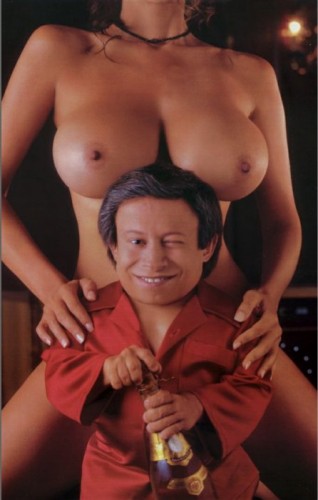



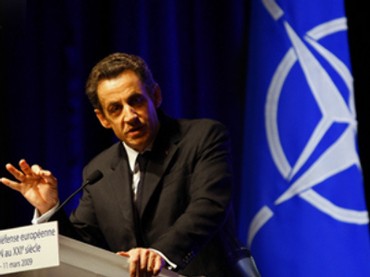

 del.icio.us
del.icio.us
 Digg
Digg Der „zweifache Nationsbegriff“ der Ungarn sei einer der Gründe, warum EU-Alteuropa den Magyaren so sehr mißtraut, führt Georg Paul Hefty in einem lesenswerten, leider nicht kostenfrei zugänglichen Beitrag in der Samstags-FAZ vom 5. Mai aus. Politischen Ausdruck findet der „zweifache Nationsbegriff“ in der neuen ungarischen Verfassung, die zwischen Staatsnation und Volk als Sprach- und Abstammungsgemeinschaft differenziert und vor allem
Der „zweifache Nationsbegriff“ der Ungarn sei einer der Gründe, warum EU-Alteuropa den Magyaren so sehr mißtraut, führt Georg Paul Hefty in einem lesenswerten, leider nicht kostenfrei zugänglichen Beitrag in der Samstags-FAZ vom 5. Mai aus. Politischen Ausdruck findet der „zweifache Nationsbegriff“ in der neuen ungarischen Verfassung, die zwischen Staatsnation und Volk als Sprach- und Abstammungsgemeinschaft differenziert und vor allem 
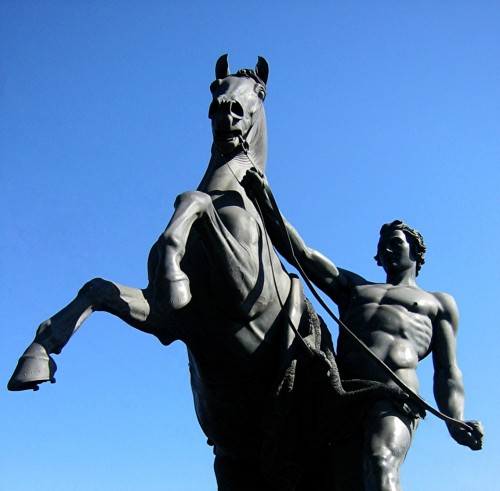
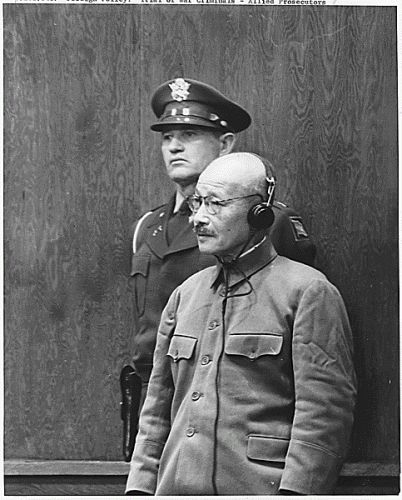
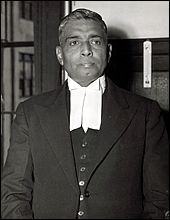 Nous savions déjà que l’Inde a fourni au casting de la seconde guerre mondiale un personnage très original, Subhas Chandra Bose. L’acte final de la seconde guerre mondiale s’est joué sur un front judiciaire et non plus guerrier avec les procès de Nuremberg et Tokyo, où les vainqueurs ont soumis les vaincus à leur jugement. Lors du procès de Tokyo, c’est un autre Indien qui a ravi la vedette, le juge Radhabinod Pal.
Nous savions déjà que l’Inde a fourni au casting de la seconde guerre mondiale un personnage très original, Subhas Chandra Bose. L’acte final de la seconde guerre mondiale s’est joué sur un front judiciaire et non plus guerrier avec les procès de Nuremberg et Tokyo, où les vainqueurs ont soumis les vaincus à leur jugement. Lors du procès de Tokyo, c’est un autre Indien qui a ravi la vedette, le juge Radhabinod Pal. 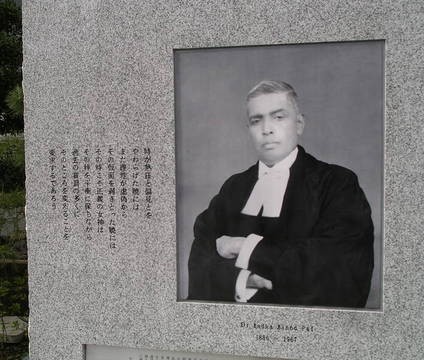






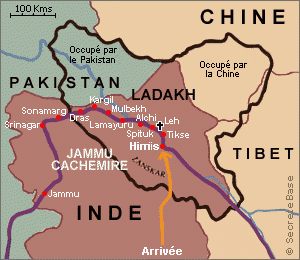 Un récit traditionnel évoque parfois la présence des tribus perdues d’Israël sur le territoire afghan actuel. D’autres parlent de leur présence au Cachemire voisin, où, dit-on, elles auraient reçu la visite d’un certain Jésus de Nazareth. Telle était, de toutes les façons, la thèse d’un aristocrate russe, Nicolaï Notovitch qui l’a consignée dans un ouvrage “Le Voyage de Jésus au Cachemire et ses prêches aux tribus perdues d’Israël”, publié en 1890 après une expédition aventureuse dans l’Himalaya. Notovitch affirmait qu’il avait trouvé un manuscrit de la main même de Jésus dans un monastère lamaïste du Ladakh, la partie ethniquement tibétaine du Cachemire.
Un récit traditionnel évoque parfois la présence des tribus perdues d’Israël sur le territoire afghan actuel. D’autres parlent de leur présence au Cachemire voisin, où, dit-on, elles auraient reçu la visite d’un certain Jésus de Nazareth. Telle était, de toutes les façons, la thèse d’un aristocrate russe, Nicolaï Notovitch qui l’a consignée dans un ouvrage “Le Voyage de Jésus au Cachemire et ses prêches aux tribus perdues d’Israël”, publié en 1890 après une expédition aventureuse dans l’Himalaya. Notovitch affirmait qu’il avait trouvé un manuscrit de la main même de Jésus dans un monastère lamaïste du Ladakh, la partie ethniquement tibétaine du Cachemire. 
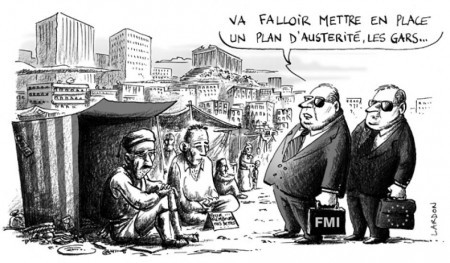
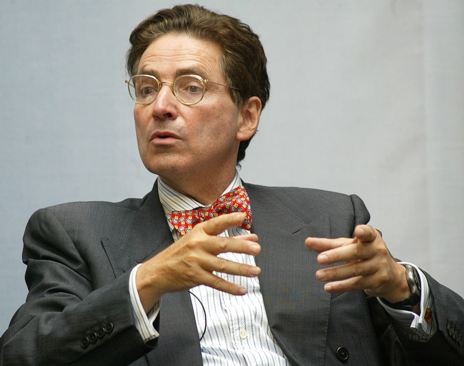
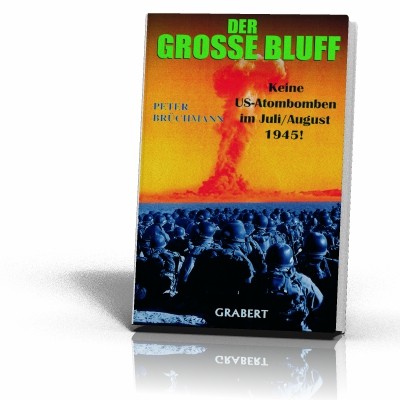
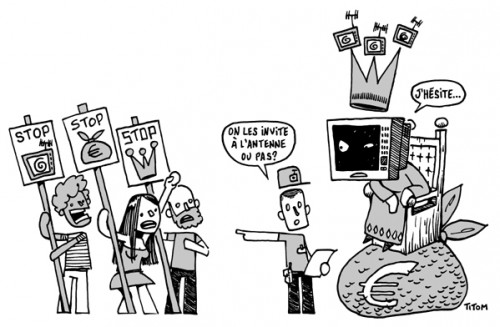
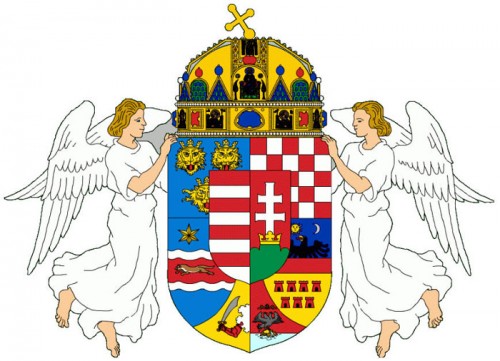
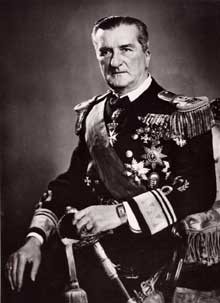 “Il est vrai que je n’ai jamais pensé à une dynastie Horthy et je ne peux que déplorer le fait que certains cercles, en Hongrie, affirment qu’une telle pensée aurait pu exister”. Telles sont les paroles qu’a couchées sur le papier le régent du royaume Miklos Horthy dans ses mémoires, où il exprime son point de vue sur l’éventuelle fondation d’une dynastie. Les faits sont pourtant différents. Très tôt, le régent a cultivé l’idée d’assurer dans le futur le pouvoir aux siens, et surtout à son fils Istvan qu’il adulait. Son épouse Magdolna, très ambitieuse, et la camarilla qui l’entourait confortaient le régent dans ses intentions.
“Il est vrai que je n’ai jamais pensé à une dynastie Horthy et je ne peux que déplorer le fait que certains cercles, en Hongrie, affirment qu’une telle pensée aurait pu exister”. Telles sont les paroles qu’a couchées sur le papier le régent du royaume Miklos Horthy dans ses mémoires, où il exprime son point de vue sur l’éventuelle fondation d’une dynastie. Les faits sont pourtant différents. Très tôt, le régent a cultivé l’idée d’assurer dans le futur le pouvoir aux siens, et surtout à son fils Istvan qu’il adulait. Son épouse Magdolna, très ambitieuse, et la camarilla qui l’entourait confortaient le régent dans ses intentions. 
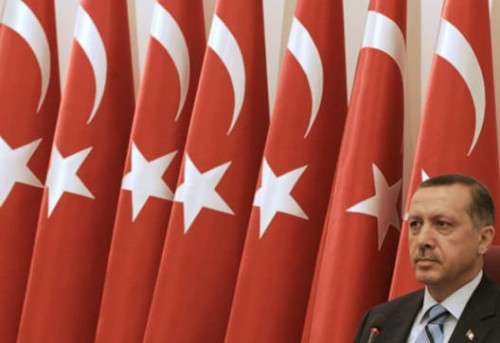


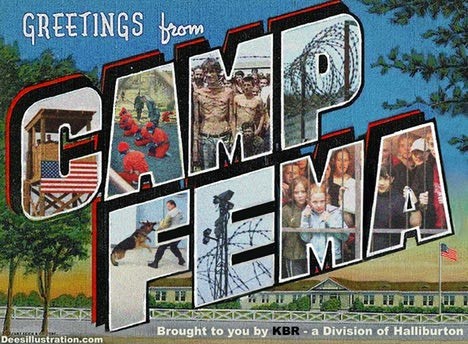
 The manual states, “These operations may be performed as domestic civil support operations,” and adds that “The authority to approve resettlement such opérationswithin U.S. territories,” would require a “special exception” to The Posse Comitatus Act, which can be obtained via “the President invoking his executive authority.”
The manual states, “These operations may be performed as domestic civil support operations,” and adds that “The authority to approve resettlement such opérationswithin U.S. territories,” would require a “special exception” to The Posse Comitatus Act, which can be obtained via “the President invoking his executive authority.”